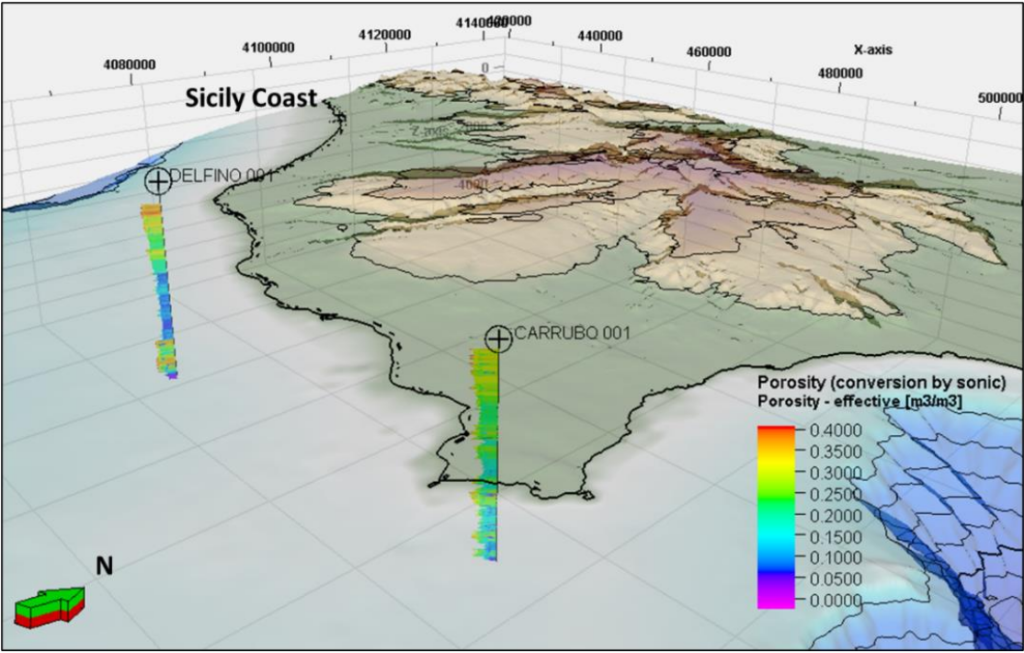Home Institution: University of Roma Tre
Host Institution: Université de Montpellier
Duration of stay (days): 10
Objectives: The aim is to define a methodology for the analysis of deep wells (in particular offshore) to investigate the characteristics of deep groundwater. The main objective will be to define a detailed workflow based on the multidisciplinary analysis of well Composite Logs (complete summary of all operations carried out during drilling) using fluid tests, and electrical logs to define the presence of deep groundwater through the estimation of pore water conductivity.
Summary of the work: During this STSM, the objective was to define a methodology for the analysis of deep wells to identify deep groundwater and define their characteristics. A detailed workflow was defined based on multidisciplinary analysis of well Composite Logs (complete summary of all operations performed during drilling) using fluid tests (DSTs and production test). Production tests and DSTs are measurements that are carried out in the wells under production conditions, to determine the nature of the fluid present and the production capacity of the mineralized formations. Through these, it is possible to extract salinity and pressure information. The workflow was defined according to the following steps: i) choose an area with good data availability in terms of deep wells (the Hyblean Plateau and its adjacent offshore); ii) within the study area, two key wells were chosen, one onshore (Carrubo 1) and one offshore (Delfino 1); iii) data were extracted directly from the intervals that have been tested by DST’s or Production test (salinity data of the recovered fluid; pressures of the formation fluid; volume quantities of the fluid recovered during the test; the times of duration of the test). Then, in addition to the planned work, a comparison was also made between the fluid test method results and the pore water conductivity method applied on well logs. The electrical logs of the wells surveyed were digitised for a total of about 24 km of digitised logs. Then porosity was derived by converting the Sonic log and conductivity was calculated from resistivity using Waxman and Smith’s 1968 law, based on Archie’s law of 1942. Finally, pore water conductivity was calculated along the profiles of the chosen wells.
